Nesting Instincts
Most of us have the good fortune to raise our families in safe, comfortable houses. Birds want nothing less.
Like us, birds need good homes to raise their families, and for many species, man-made bird houses satisfy their needs. Especially in the dangerous world of urban bird-dom, with few places to hide a nest and cats and squirrels on the prowl (yes, squirrels eat nestlings), bird houses offer safe living quarters.
Our native chickadees and house wrens depend on them, as do introduced starlings and house sparrows. In wilder areas, bluebirds and tree swallows readily move into our bird houses as well.
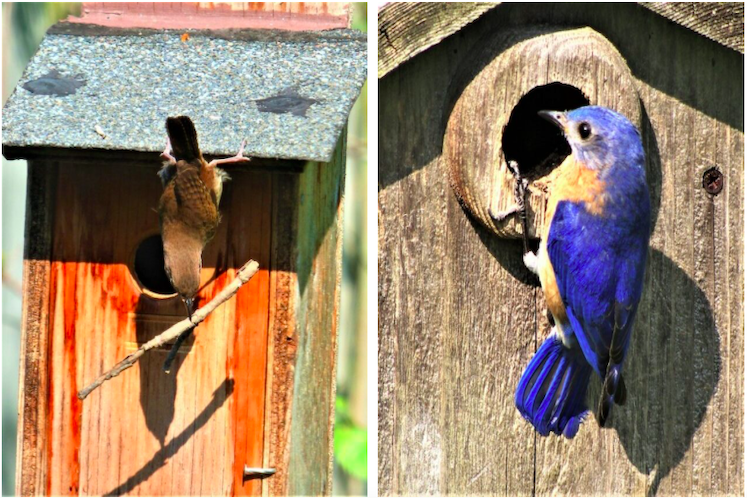
At left, Don Scallen captures a shot of an an adult house wren bringing home a stick, while at right, John Beaudette observes a male bluebird.
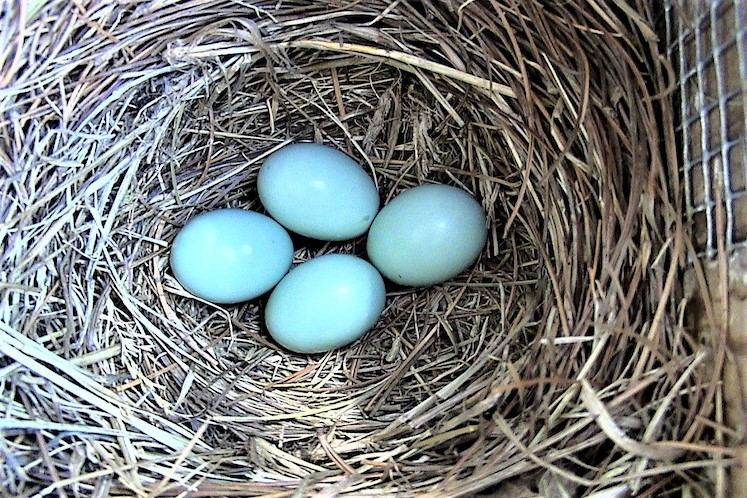
Bluebird eggs lay safely in the nest. Photo by John Beaudette.
At Forks of the Credit Provincial Park in Caledon, the Halton/North Peel Naturalist Club has maintained 22 bird houses for several years. Year after year the occupancy rate exceeds 90 per cent. Most of the tenants are tree swallows, but bluebirds and house wrens also take up residence. Just as there’s a scarcity of housing for people in Ontario, it appears there’s a scarcity of housing for birds as well.
After finding homes to raise our families, we do our best to make them livable. Birds do too, and each species puts its unique stamp on interior decorating. Dried grass is the utilitarian choice for bluebirds, while house wrens pack their boxes full of small sticks.
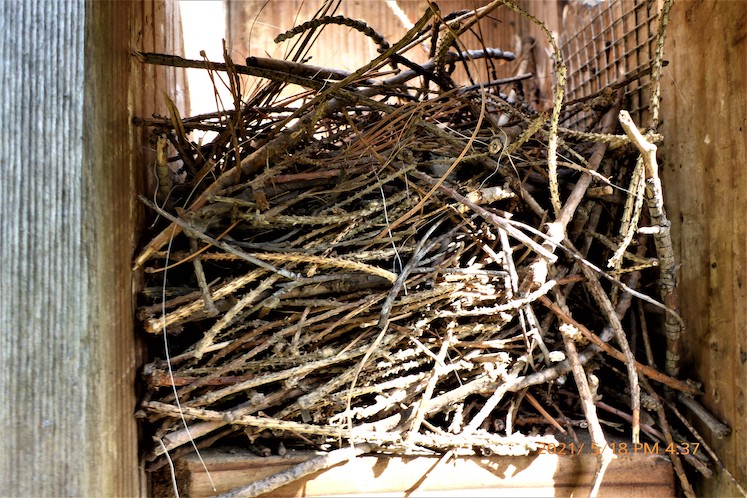
A house wren nest. Photo by John Beaudette.
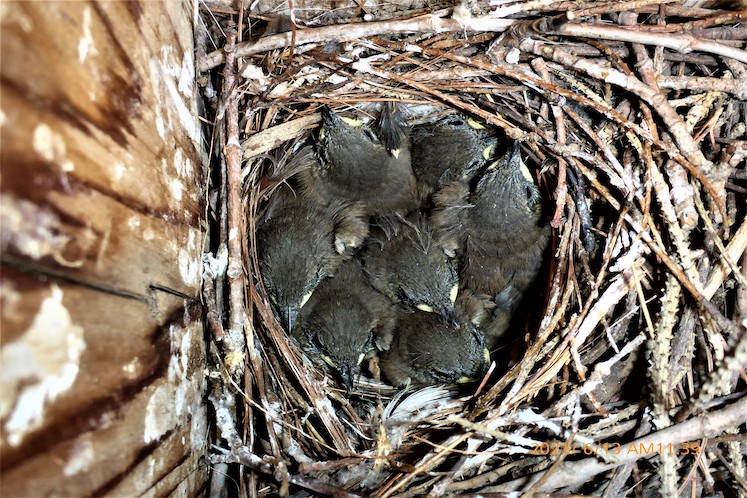
House wren nestlings. Photo by John Beaudette.
But other birds opt for comfort. Tree swallows line their nests with feathers – not their own, but plumes harvested from the nests of other birds such as ducks and geese. With these they create downy avian duvets for their young to rest on and hide under. Luxury!
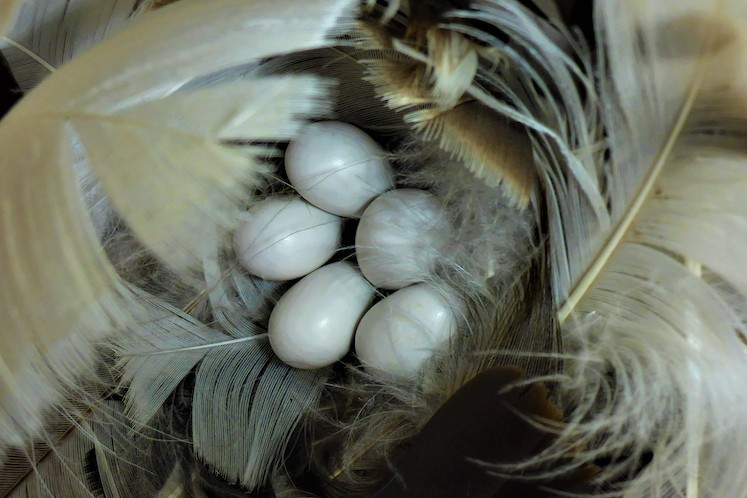
Tree swallow eggs in a nest of feathers. Photo by John Beaudette.
If I had my druthers though, I’d be a chickadee chick. Then I’d get to snuggle with my siblings in a plush nest of soft green moss, along with fur from local mammals purloined by mom and dad. It’s a wonder chickadee fledglings ever choose to fly the coop.
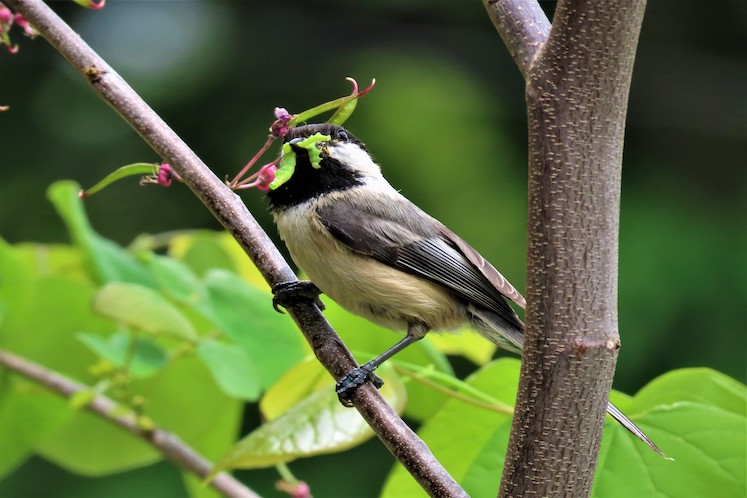
Chickadee parent with food for nestlings. Photo by Don Scallen.
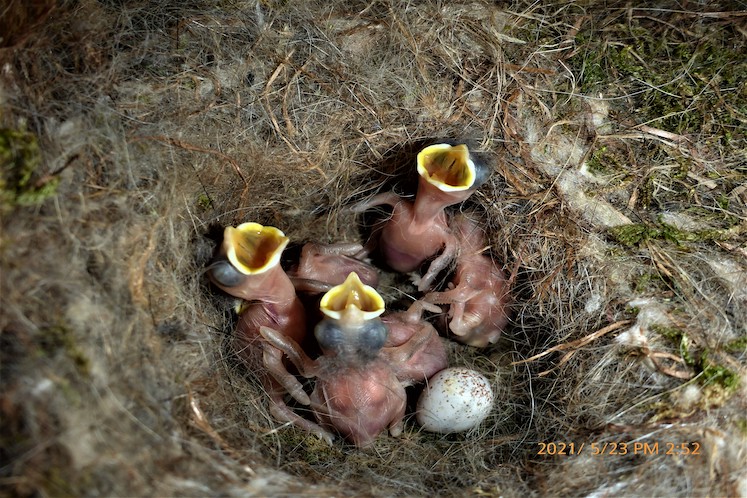
Chickadee nestlings begging for food. Photo by John Beaudette.
Most of us have the good fortune to raise our families in safe, comfortable houses. Birds want nothing less.
Related Stories
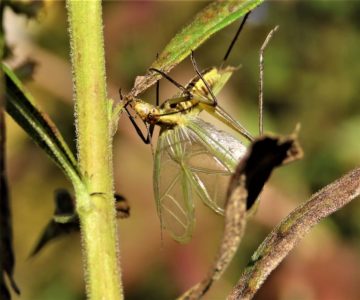
Crooning Tree Crickets
Nov 3, 2022 | | Notes from the WildMale tree crickets – rock stars of the insect realm – sing to attract females, and display other courtship behaviour not so different from ours.
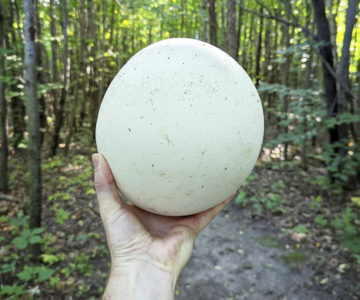
Fascinating Fungi
Oct 5, 2022 | | Notes from the WildFall is the perfect time to get down low and take a closer peek at the stunningly diverse and complex organisms that are fungi


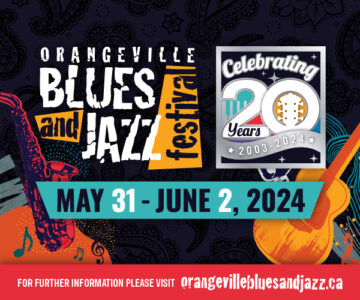



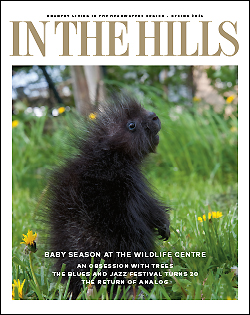


Hi Don,
Would you remove a cowbird egg from a Phoebe nest? We’re fledging our second batch of bluebirds.
Best regards
Cheryl Bailey on Jul 16, 2023 at 1:12 pm |
Hi Cheryl,
I would remove it. Cowbirds are prolific. We’ve assisted them greatly here in Ontario and elsewhere by transforming forests into agricultural land. (Cowbirds were formerly restricted to prairies further west.)
The removal of the cowbird egg won’t hurt cowbirds at all but may allow the phoebes to successfully rear a brood. Note that even though there is only one cowbird egg, a single cowbird chick might outcompete all of its nestlings, by aggressively claiming food and growing faster.
Hope this helps,
Don Scallen
Don Scallen on Jul 17, 2023 at 9:29 am |